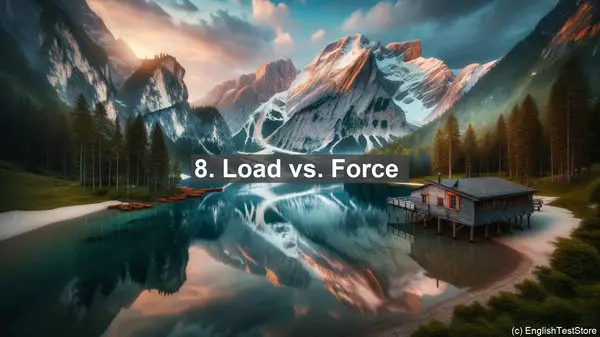Introduction
Today, we’re going to dive into the fascinating world of biomechanical engineering. But before we do, let’s address a common challenge – the confusion caused by certain words in this field. In this lesson, we’ll discuss the top 10 words that often trip up students. By the end, you’ll have a clearer understanding of these terms, making your journey in biomechanical engineering smoother. Let’s get started!
1. Stress vs. Strain
One of the most fundamental distinctions in biomechanics is between stress and strain. Stress refers to the internal resistance experienced by a material when subjected to an external force, while strain is the resulting deformation. Think of stress as the force applied, and strain as the material’s response. Understanding this difference is crucial in designing structures that can withstand various loads.
2. Compression vs. Tension
Compression and tension are two opposing forces that act on a material. Compression occurs when a material is squeezed or pressed, while tension is the force that stretches or elongates it. Both forces are significant in biomechanical engineering, as they determine a material’s behavior under different conditions. For example, bones are excellent at withstanding compression, but less so when it comes to tension.

3. Kinematics vs. Kinetics
While they sound similar, kinematics and kinetics refer to different aspects of motion. Kinematics deals with the description of motion, including factors like position, velocity, and acceleration. On the other hand, kinetics focuses on the forces that cause or influence motion. In biomechanics, understanding both is essential for analyzing how the human body moves and responds to external stimuli.
4. Flexion vs. Extension
Flexion and extension are terms used to describe the movement of joints. Flexion refers to the bending or decreasing of an angle between two body parts, while extension is the opposite – the straightening or increasing of the angle. These terms are commonly used in biomechanical studies to analyze movements like walking, running, or even simple actions like bending your arm.
5. Shear vs. Bending
Shear and bending are two types of forces that act on a structure. Shear force occurs when two parts of a material slide or move in opposite directions, causing a parallel force. Bending, on the other hand, is the result of an off-center force that causes a material to curve or deform. Both forces are significant in biomechanical engineering, as they determine a structure’s stability and ability to withstand loads.
6. Biocompatible vs. Bioinert
When it comes to materials used in biomedical applications, biocompatibility is a crucial factor. Biocompatible materials are those that can coexist with living tissues without causing harm, while bioinert materials are those that do not elicit a significant biological response. The choice between the two depends on the specific application and the desired interaction between the material and the body.
7. Accuracy vs. Precision
In the world of measurements, accuracy and precision are distinct concepts. Accuracy refers to how close a measured value is to the true or target value, while precision is about the consistency or reproducibility of the measurements. Both are essential in biomechanical experiments, as they ensure reliable and valid results. A measurement can be precise but not accurate, or accurate but not precise.

8. Load vs. Force
While these terms are often used interchangeably, they have different meanings. Load refers to the external forces acting on a structure, such as the weight or pressure applied. Force, on the other hand, is a more general term that encompasses both external and internal forces. In biomechanical engineering, understanding the magnitude and direction of forces is crucial in designing structures that can withstand them.
9. Fatigue vs. Creep
Fatigue and creep are two types of material failure that can occur over time. Fatigue refers to the weakening or damage caused by repeated loading and unloading cycles, while creep is the gradual deformation that happens when a material is subjected to a constant load over an extended period. Both phenomena are important considerations in biomechanical engineering, as they can affect the lifespan and performance of a structure.
10. Prosthesis vs. Orthosis
Prosthesis and orthosis are two types of devices used to assist individuals with impaired mobility. A prosthesis is an artificial device that replaces a missing body part, such as a limb. Orthosis, on the other hand, is a device that supports or corrects the function of an existing body part, like a brace. Understanding the distinction between the two is crucial in providing the right solution for a patient’s needs.
